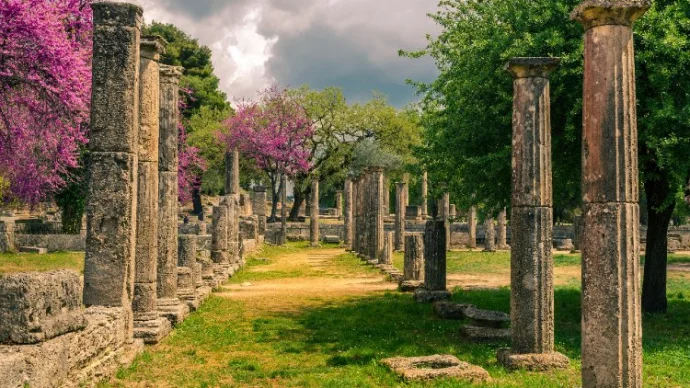About Thessaloniki Archaeological Museum
Thessaloniki Archaeological Museum takes visitors through the history of Ancient Macedonia, exploring the lives of its citizens, their ideology, and their culture from Neolithic times through to the Mycenaean and Roman periods.
Exhibiting artefacts ranging from daily tools to burial pieces and ideological paraphernalia to gold, the Thessaloniki Archaeological Museum offers an insight into the lives of those who lived in Ancient Macedonia from its creation and throughout its existence.
There are five exhibits in all in the Thessaloniki Archaeological Museum, arranged chronologically and including multimedia presentations and audio guides.
History of Thessaloniki Archaeological Museum
Thessaloniki Archaeological Museum is in Thessaloniki, Central Macedonia, and is one of the largest museums in Greece.
The building, designed and built by architect Patroklos Karantinos, was constructed in 1962, and is a good example of modern architectural trends in Greece. A new wing was added in 1980 to display the finds from Vergina until 1997. In 2001 and 2004, the museum’s exhibits were extensively renovated, and its permanent exhibits reorganised.
Thessaloniki Archaeological Museum Today
The museum holds a number of exhibits. Notable are the central rooms which hold exhibits from the archaeological dig conducted at Thessaloniki and, more widely, Macedonia.
The new wing holds two exhibitions: The Gold of Macedon, which contains artefacts from the cemeteries of Sindos, Agia Paraskevi, Nea Filadelfia, Makrygialos, Derveni, Lete, Serres, and Evropos, as well as material from prehistoric Thessalonikan settlements which date from the Neolithic to the Early and Late Bronze Age.
The museum also hosts a number of temporary and thematic exhibitions. The Manolis Andronikos Room currently has an exhibition titled ‘The Coins of Macedonia from the 6th Century to 148 BC’, and the lobby displays finds from the excavation of Makrygialos, a Neolithic settlement in Pieria.
Other highlights include 9-10 million-year-old human skulls, and a bronze Athena with the face of Medusa.
In February 2010, Greek authorities arrested two men who were found in possession of various antiquities. This included a bronze statue of Alexander, which was possibly a work of Lysippos. If confirmed, it would be the first original work of Lysippos ever found. Scientists within the laboratory of the museum are examining the find with the aim of confirming or denying its authenticity.
It’s a good idea to visit the museum after a few days enjoying the city, in order to have context as to where the items were discovered.
Getting to Thessaloniki Archaeological Museum
From the centre of Thessaloniki, the museum is reachable in around 10 minutes by car. By foot, it takes around 25 minutes from the centre, via Agiou Dimitriou and Leonida Iasonidou, and is an easy walk along a predominantly flat road.
Featured In

Ancient Greek Ruins
Immerse yourself in classical history by stepping into the world of Ancient Greece. Here's our pick of 10 essential sites to visit.

Greece Historic Sites
Alongside its contributions to philosophy, astrology, and medicine, Greece's sites from classical antiquity have stood the test of time. Here are 10 must-see sites for any visiting history enthusiast.




















